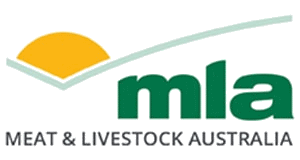P.PSH.0513 - MSA Saleyard Pathway Evaluation and Feeding Options
Did you know that currently, less than 1% of the MSA graded cattle are submitted via the current MSA saleyard pathway? This is largely due to the pathway not being commercially applicable or viable based on the regulated timeframes.
| Project start date: | 30 March 2021 |
| Project end date: | 31 January 2024 |
| Publication date: | 28 January 2025 |
| Project status: | Completed |
| Livestock species: | Grass-fed Cattle |
| Relevant regions: | National |
|
Download Report
(1.2 MB)
|
|
Summary
The desired outcome of this project was to commercially validate the existing MSA saleyard pathway, an extended pathway and feeding pathways, to enable an increase in the growth of MSA graded cattle that can achieve the necessary eating quality compliance.
Objectives
Determine the viability of extended (48 hours) pathways as opposed to the current 36 hours requirement.
Assess feeding onsite pathway – re-establishing MSA eligibility after feeding saleyard cattle a high quality feed post sale process.
Key findings
Since the MQ4 and tenderness in the 48 HR group in Rep 1 were comparable to those of the direct consignment group and neither Rep 2 nor the combined trials significantly differed from the controls, the MSA saleyard pathway could be extended to a maximum of 48 hours following the current MSA saleyard pathway rules. The 48 HR pathway must involve no mixing of cattle.
Although no significant differences in consumer eating quality factors were observed between the directly consigned group and the 72-hours treatment for each replicate and the combined analysis, it was determined there was insufficient evidence (two replicates only) to support the adoption of the 72 hours with refeed pathway. Additionally, commercial implementation of a pathway including refeeding would require additional auditing and strict processes in place at saleyards to ensure the feed quality requirements were met, along with other factors such as frequency of feeding, pen size, suitable feeding equipment and feeder access. Mob size and its impact on mixing stress would also require further evaluation.
Benefits to industry
The research project provides essential data to quantify the eating quality impact of alternative cattle marketing practices with four saleyard protocols compared to a direct consignment from farm to slaughter control sourced from both NSW and Victoria. It has been noted that the MSA saleyard could be increased up to 48 hours without mixing and providing water.
MLA action
MSA standards to be updated to change MSA saleyard requirements from 36 to 48 hours from farm dispatch to slaughter.
Future research
Although the 72 hours pathway had a positive relationship with all eating quality attributes for both replications, the cattle were provided high-energy feed supplementation for one day at saleyard, further economic analysis related to feed cost and eating quality needs to be conducted. Additionally, it is clear that more research is needed to comprehend the management techniques, stress levels in different treatment groups and causes of the different treatment outcomes for the replicates, allowing for the widespread adoption of a particular method for enhancing meat eating quality.
Consistent pH differences between muscles within a carcase are considered highly likely to impact ultimate eating quality, and in particular flavour development, through interactions with muscle structure and composition, packaging, ageing and cooking. A better understanding of these relationships could have important ramifications for MSA grading.
More information
| Project manager: | Nathalie Lalaurie |
| Contact email: | reports@mla.com.au |
| Primary researcher: | The University of New England |


